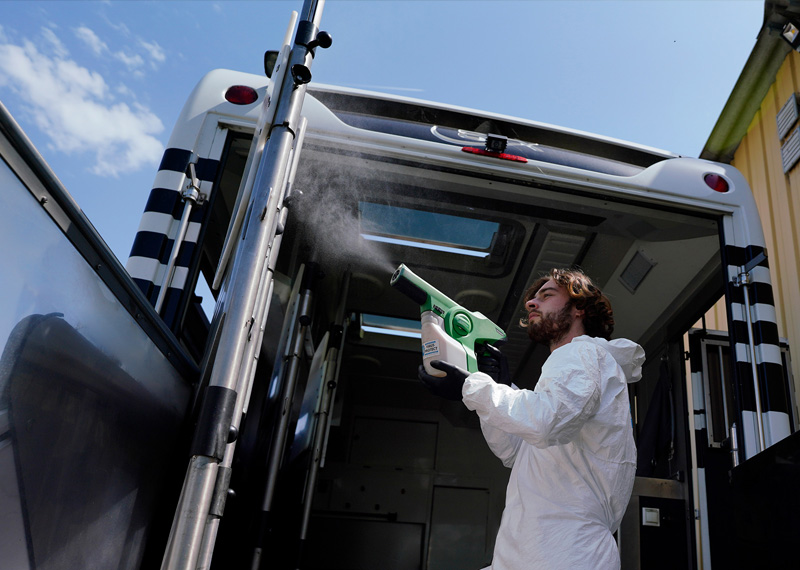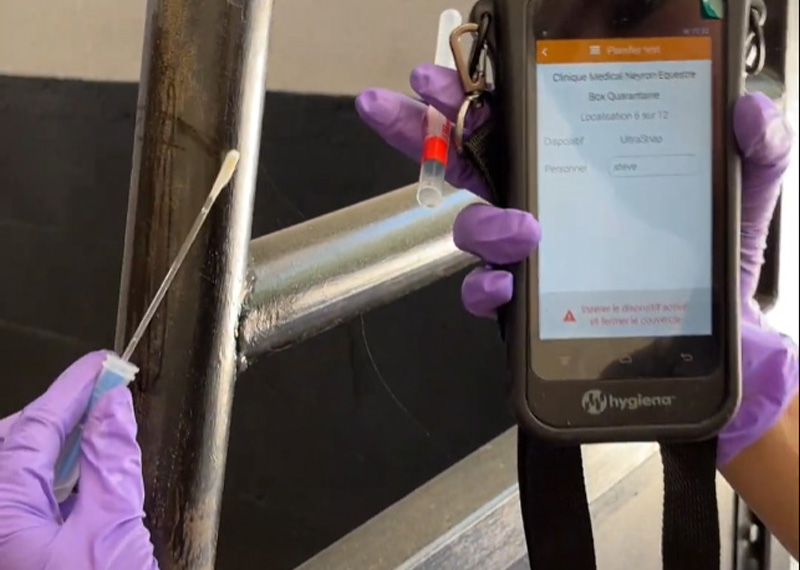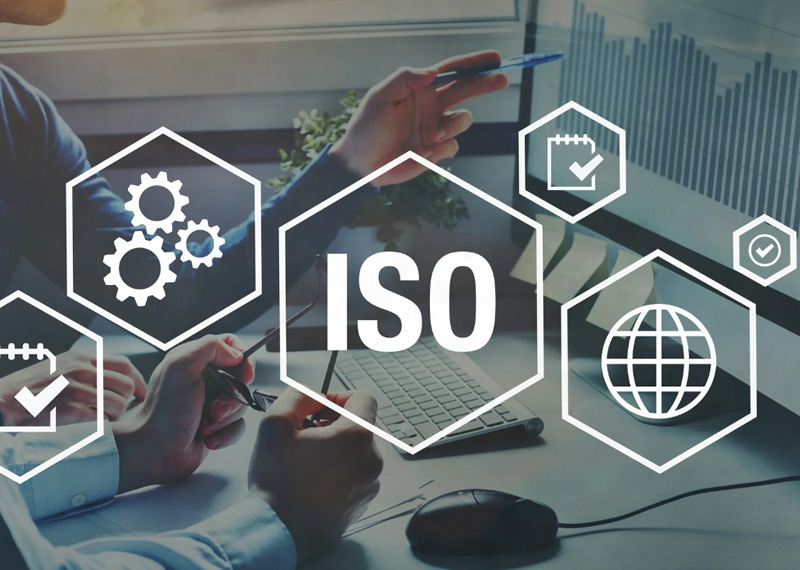why disinfect ?
To overcome the challenge of disinfection, equine veterinary clinics must adopt a comprehensive and strategic approach to disinfection, selecting suitable products, training their staff, and following strict protocols to ensure effective infection risk management.
Equine veterinary clinics specializing in horse care face unique challenges in disinfection and infection control. Here are the main issues encountered:
- Diversity of Pathogens: Equine clinics treat a variety of diseases, involving many different pathogens, including viruses, bacteria, and parasites. Each pathogen requires specific disinfection methods to be effectively eliminated, complicating cleaning procedures.
- Resistance to Disinfectants: The repeated use of certain disinfectants can lead to microorganism resistance. Finding products effective against a wide range of pathogens without contributing to resistance is a major challenge.
- Management of High-Risk Areas: Equine clinics have high-risk areas, such as operating rooms, intensive care units, and isolation zones. These areas require higher levels of disinfection and strict protocols to prevent cross-transmission of infections.
- Challenges of Sterilization in the Operating Room: Horses present unique challenges in terms of sterilization prior to surgical procedures due to their size, the presence of hair, and the possibility of contamination from dirt and other outdoor debris. Ensuring a sterile operating area is crucial to prevent post-operative infections, but preparing horses for surgery requires specific and meticulous procedures to effectively remove contaminants. Managing these aspects is complex and demands additional efforts from the staff to maintain sterile conditions, thereby increasing the challenges associated with disinfection in equine veterinary clinics specialized in horse care.
- Time and Logistics: Effective disinfection procedures can be time-consuming, which is particularly problematic in a busy clinical environment. Optimizing time without compromising the quality of disinfection is essential for the clinic’s proper functioning.
- Safety for Staff and Animals: Disinfection products must be effective but also safe for staff and animals. Some disinfectants can be toxic or irritating, posing a health risk.
- Education and Training: Ensuring that all clinic staff are properly trained and up-to-date with the best disinfection practices is a constant challenge. Regular education is necessary to maintain high standards of infection control.
- Monitoring and Evaluation: Implementing an effective system to regularly monitor and evaluate disinfection protocols, to identify areas for improvement and ensure that measures adopted are effective against targeted pathogens.
- Costs: The regular purchase of effective disinfectants and the implementation of comprehensive disinfection protocols can represent a significant cost for clinics, especially those operating with limited budgets.
Diverse Sources of Infections
The primary source of nosocomial infection stems from the transmission of diseases between different animals, most often hospitalized. There are five possible routes of contamination:
- Contamination through airborne particles is often the most complex to control (e.g., feline viral rhinotracheitis or kennel cough in dogs).
- The second possible route is oral, as in the case of parvovirus, which can be transmitted through poorly cleaned bowls.
- A third possible route is direct contact with the skin, mucous membranes, or excreta (feces, urine, or blood).
- The fourth possible route of contamination involves what are called inert vectors. This could be, for example, a computer keyboard, a telephone, an examination table, or even the floor, etc.
- Finally, the fifth and last possible route concerns contamination through vectors such as fleas, ticks, or mosquitoes. This remains much rarer in veterinary care facilities.
The other main source of contamination can be the presence of an infectious agent in the facility, such as a bacterium. It may be located on equipment, on caregiving personnel, for example, shoes, or even in disinfection products.
This could involve, for example, staphylococcus, although there are no official statistics on the frequency of these issues in France in veterinary care facilities.
How PhotoACTIVE Equine can help you
PhotoACTIVE Equine can significantly aid equine veterinary clinics in overcoming their unique disinfection and infection control challenges. Here’s how this product can be beneficial:
Broad-Spectrum Antimicrobial Action: PhotoACTIVE Equine is designed to effectively combat a wide range of pathogens, including viruses, bacteria, and fungi, that equine clinics frequently encounter. Its broad-spectrum activity ensures comprehensive disinfection, addressing the diversity of pathogens without contributing to resistance.
Long-lasting Protection: Unlike conventional disinfectants that require frequent reapplication, PhotoACTIVE Equine offers persistent antimicrobial effects. This long-lasting protection is particularly beneficial for high-risk areas such as operating rooms, intensive care units, and isolation zones, ensuring these critical areas remain sanitized for extended periods.
Efficiency and Time-saving: The durable nature of PhotoACTIVE Equine reduces the need for constant disinfection, saving valuable time in a busy clinical setting. This efficiency allows staff to focus more on patient care rather than continuous cleaning procedures.
Safety for Staff and Animals: Formulated to be safe for use around both humans and horses, PhotoACTIVE Equine minimizes the risks associated with exposure to toxic or irritating chemicals. This safety profile ensures a healthier environment for clinic personnel and equine patients.
Supports Infection Control Education: By integrating PhotoACTIVE Equine into their infection control protocols, clinics can enhance their staff training programs. The product’s effectiveness and ease of use serve as practical examples of implementing best practices in disinfection.
Monitoring and Evaluation: The effectiveness of PhotoACTIVE Equine can facilitate the monitoring and evaluation of disinfection protocols within clinics. Its consistent performance against pathogens makes it easier for clinics to assess the efficacy of their infection control measures.
Cost-effectiveness: By reducing the frequency of applications and preventing infection outbreaks, PhotoACTIVE Equine can help equine veterinary clinics save on costs associated with disinfectant purchases and managing infectious diseases.
Environmental Sustainability: PhotoACTIVE Equine’s formulation is designed with environmental considerations in mind, offering a more eco-friendly alternative to harsh chemical disinfectants. This feature aligns with the growing trend towards sustainability in veterinary medicine.
Incorporating PhotoACTIVE Equine into the disinfection protocols of equine veterinary clinics offers a comprehensive solution to their specific challenges, enhancing biosecurity measures and contributing to the overall health and safety of both equine patients and clinic staff.




